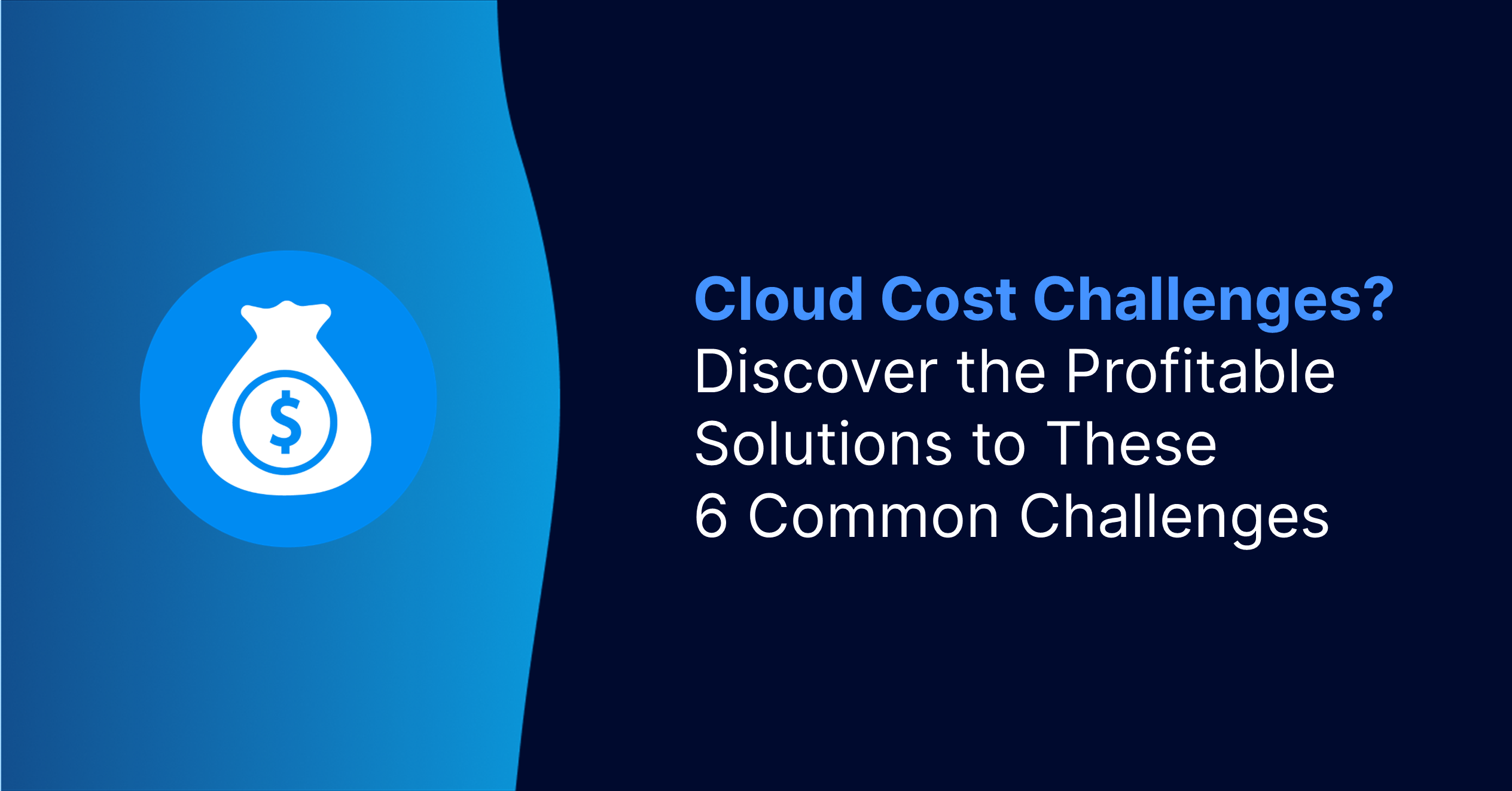Cloud Cost Challenges? Discover the Profitable Solutions to These 6 Common Challenges
In today’s digital landscape, the adoption of cloud technology has become a necessity for businesses of all sizes. The cloud offers unparalleled scalability, flexibilit...
20/09/2023 | 2 Minute Read

In today’s digital landscape, the adoption of cloud technology has become a necessity for businesses of all sizes. The cloud offers unparalleled scalability, flexibility, and agility, enabling organisations to streamline operations, innovate faster, and stay competitive. However, while the cloud offers immense advantages, it also presents unique challenges when it comes to profitability. One of the most pressing issues is keeping cloud costs under control.
In this blog, we will explore the challenges businesses face in remaining profitable in the cloud and highlight the importance of cloud cost optimisation as the overriding theme.
Cloud Cost Challenge 1: Lack of Visibility and Control
One of the primary challenges for businesses in the cloud is the lack of visibility and control over their cloud spending. The dynamic nature of cloud services, where resources can be provisioned or deprovisioned on-demand, often leads to cost sprawl. Without proper monitoring and governance, it becomes challenging to track and manage these expenses effectively.
Solution: Implementing cloud cost management tools and practices to gain visibility into spending patterns and optimise resource allocation is crucial. By establishing budgets, setting alerts, and implementing resource tagging, businesses can regain control over their cloud expenditures.
Cloud Cost Challenge 2: Oversized or Underutilised Resources
Another major hurdle in cloud cost optimisation is the tendency to either overprovision or underutilise resources. Overprovisioning involves allocating more resources than necessary, while underutilisation occurs when resources are not fully leveraged. Both scenarios lead to unnecessary costs.
Solution: Implementing auto-scaling and right-sizing strategies can help address this challenge. Auto-scaling allows resources to adapt to changing workloads automatically, while right-sizing ensures that instances match actual workload requirements, avoiding wastage.
Cloud Cost Challenge 3: Data Transfer and Storage Costs
Cloud providers often charge for data transfer and storage, and these costs can quickly add up. Businesses may unintentionally incur significant expenses if they are not mindful of data transfer rates and storage utilisation.
Solution: Employ data lifecycle management policies to move less frequently accessed data to lower-cost storage tiers or archival storage. Additionally, optimise data transfer by leveraging content delivery networks (CDNs) and regional redundancy.
Cloud Cost Challenge 4: Complex Pricing Models
Cloud providers offer a wide range of services with complex pricing models. Navigating these models and understanding the cost implications of different services can be challenging, especially for businesses new to the cloud.
Solution: Invest in training and educate your IT and finance teams on the cloud provider’s pricing models. Utilise pricing calculators provided by cloud providers to estimate costs accurately before deployment.
Cloud Cost Challenge 5: Lack of Cloud Cost Optimisation Culture
In many organisations, cloud cost optimisation is not a top priority or ingrained in the company culture. Without a clear mandate and accountability for cost optimisation, cloud spending can spiral out of control.
Solution: Foster a culture of cost consciousness within the organisation. Encourage cross-functional teams to collaborate on cost-saving initiatives, and incentivise employees for identifying and implementing cost optimisation measures.
Cloud Cost Challenge 6: Shifting Workloads and Architectural Changes
Business needs evolve over time, and so do workloads and application architectures. Migrating or refactoring applications can be costly, and businesses may face challenges in optimising costs during these transitions.
Solution: Carefully plan and analyse the cost implications of workload migrations or architectural changes. Use cloud provider tools and third-party solutions to simulate and model costs before making any significant changes.
Optimising your cloud cost is a critical aspect of profitability in the cloud era. The challenges discussed above can hinder an organisation’s ability to leverage the cloud’s benefits while maintaining cost efficiency. To overcome these challenges, businesses must adopt a proactive approach, investing in tools and training or partnering with a cloud provider who specialises in cloud cost optimisations such as Deimos. To learn more on how Deimos can help you, click here.